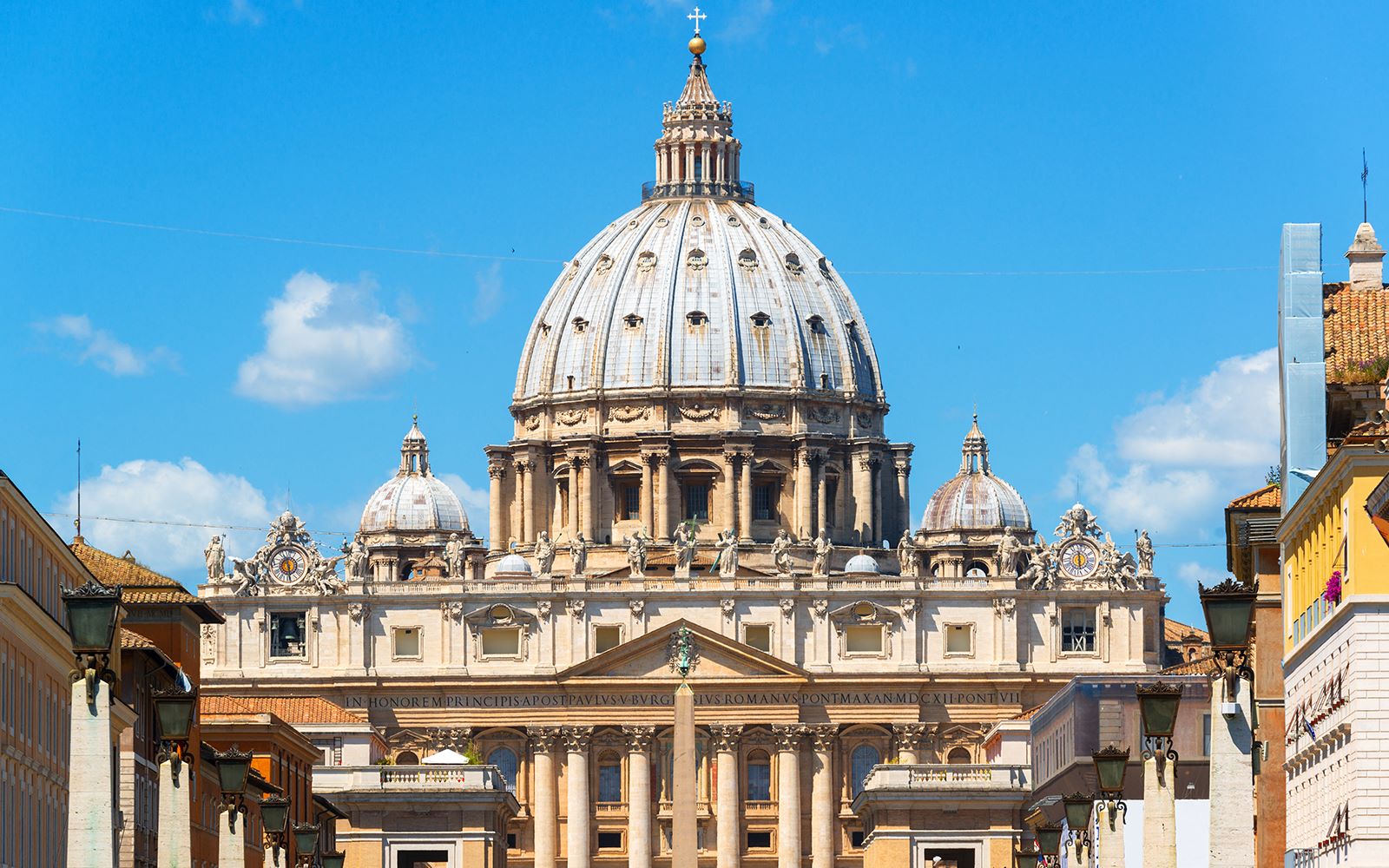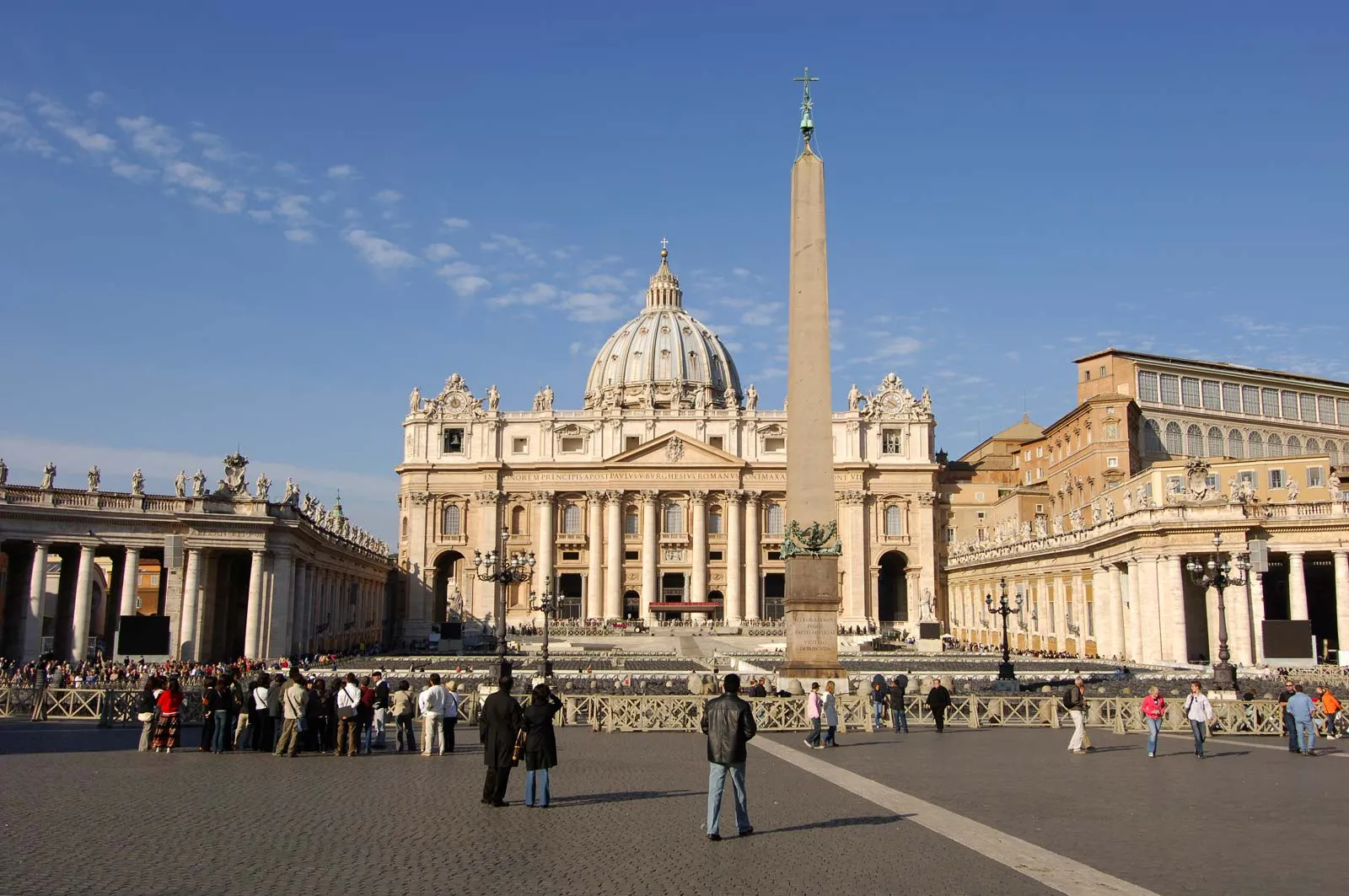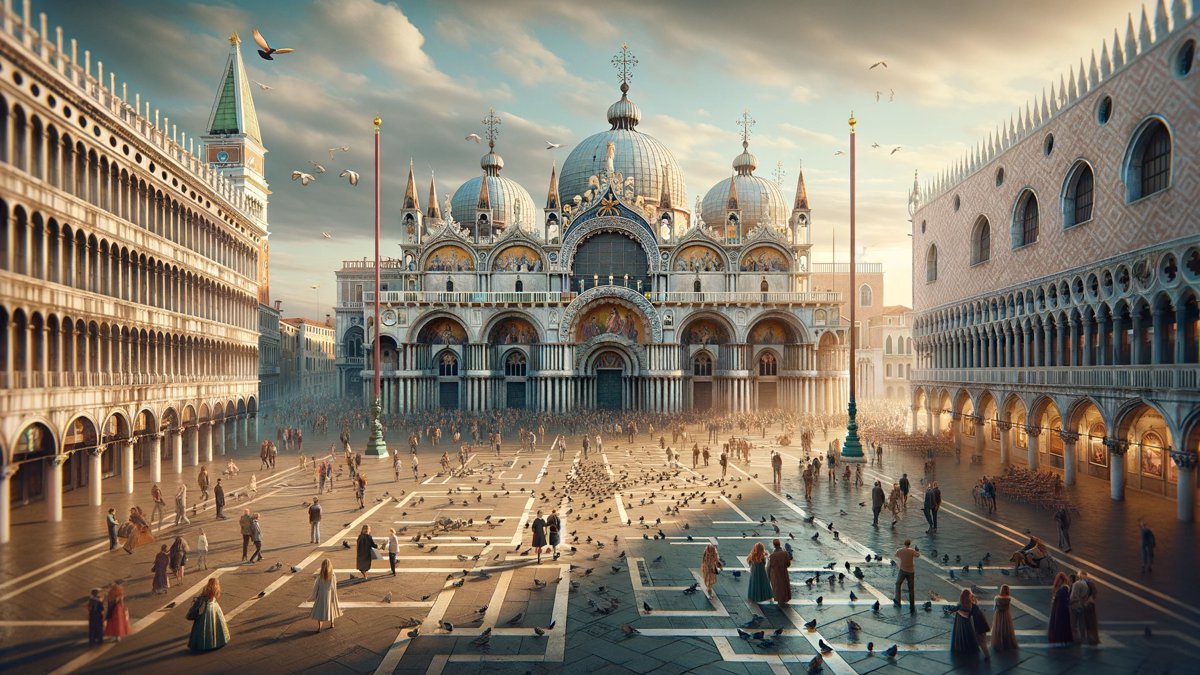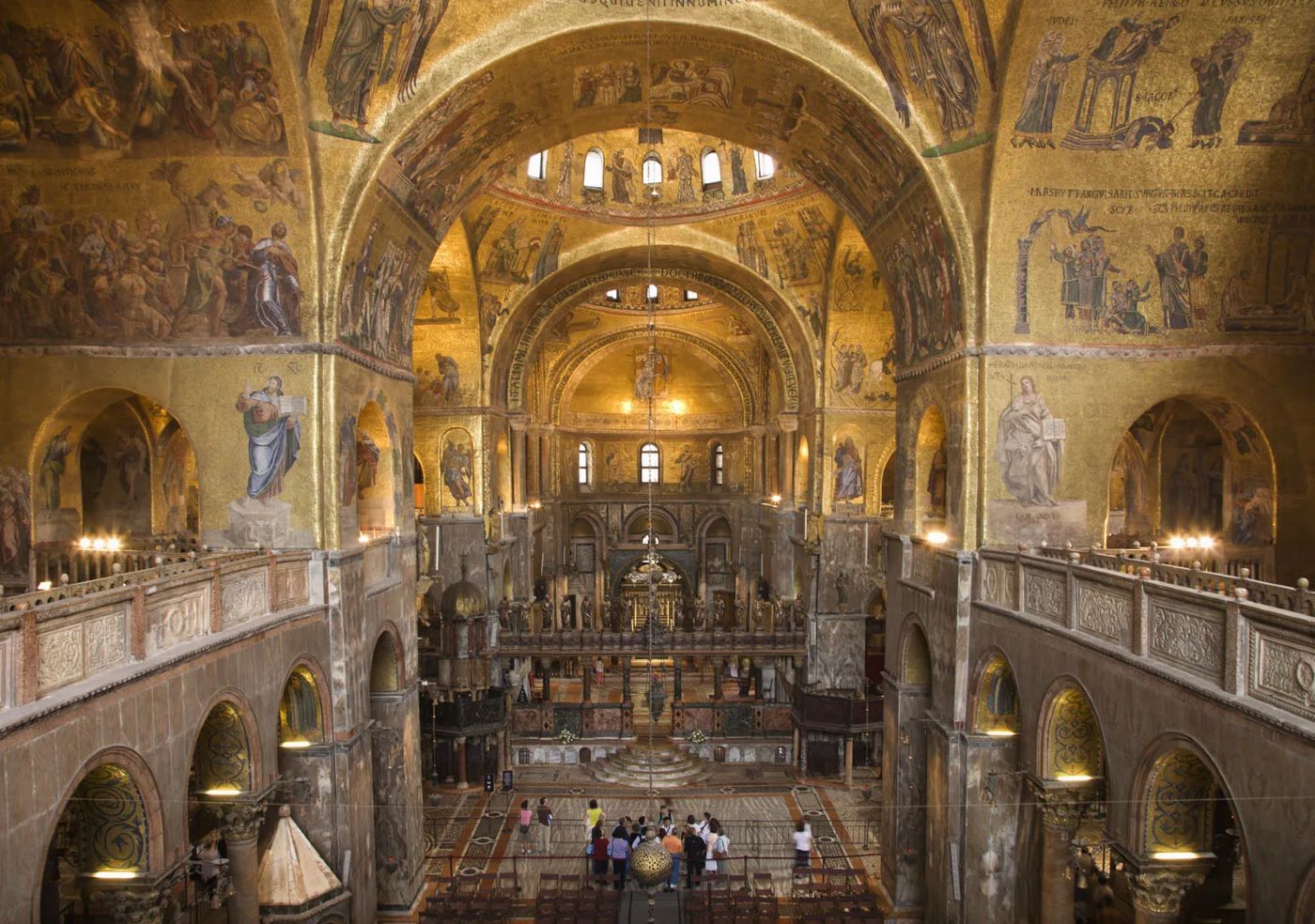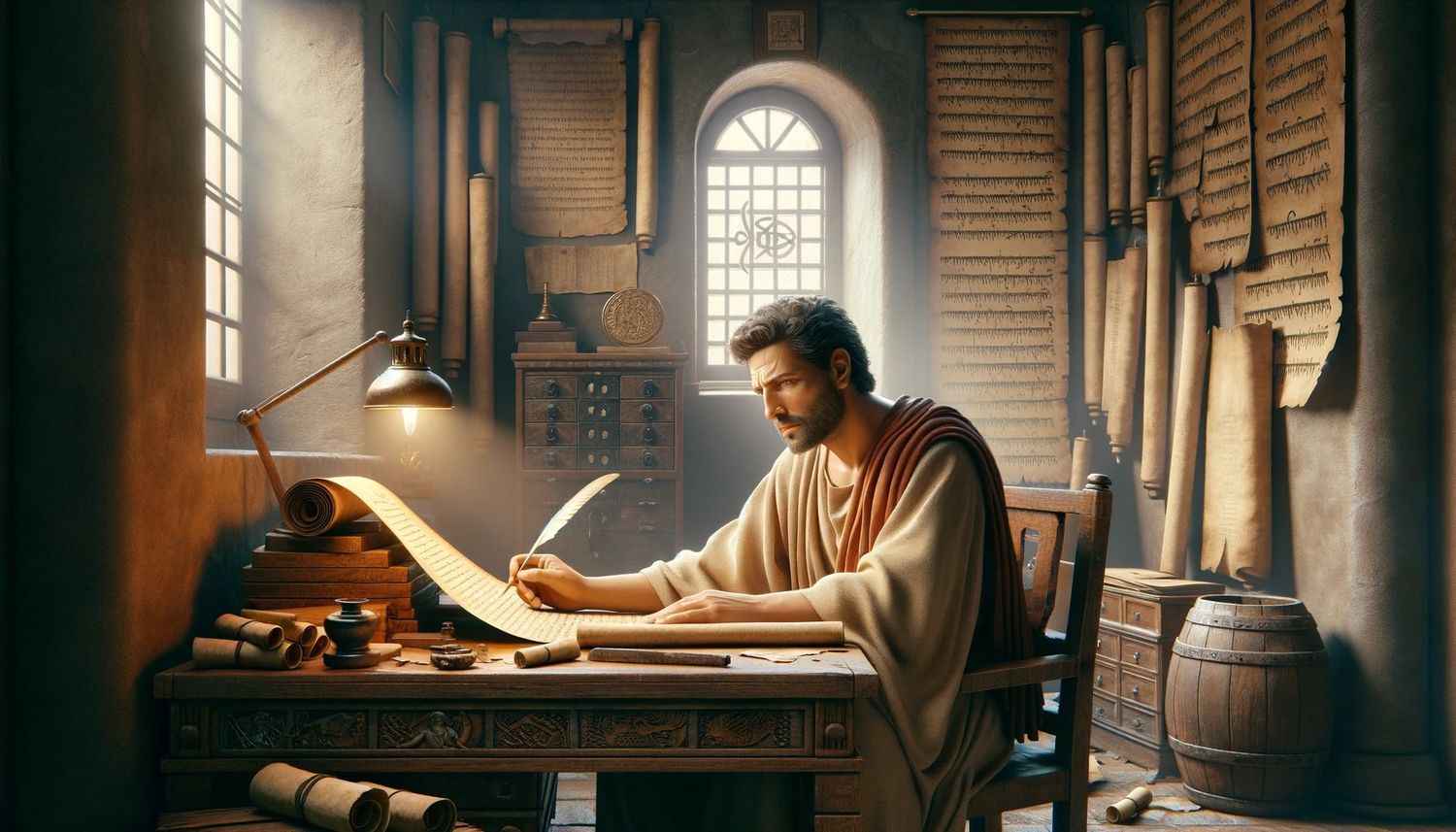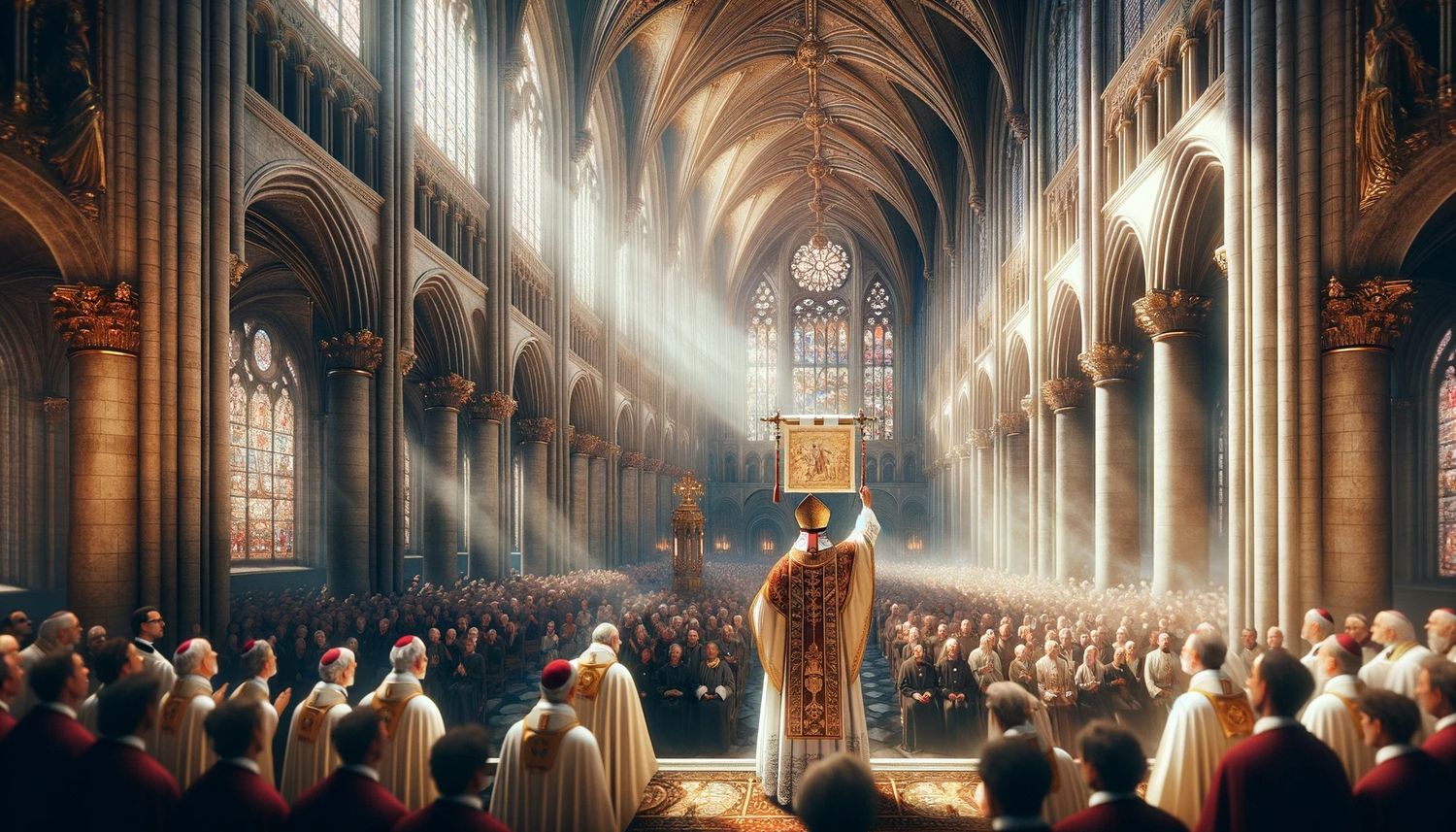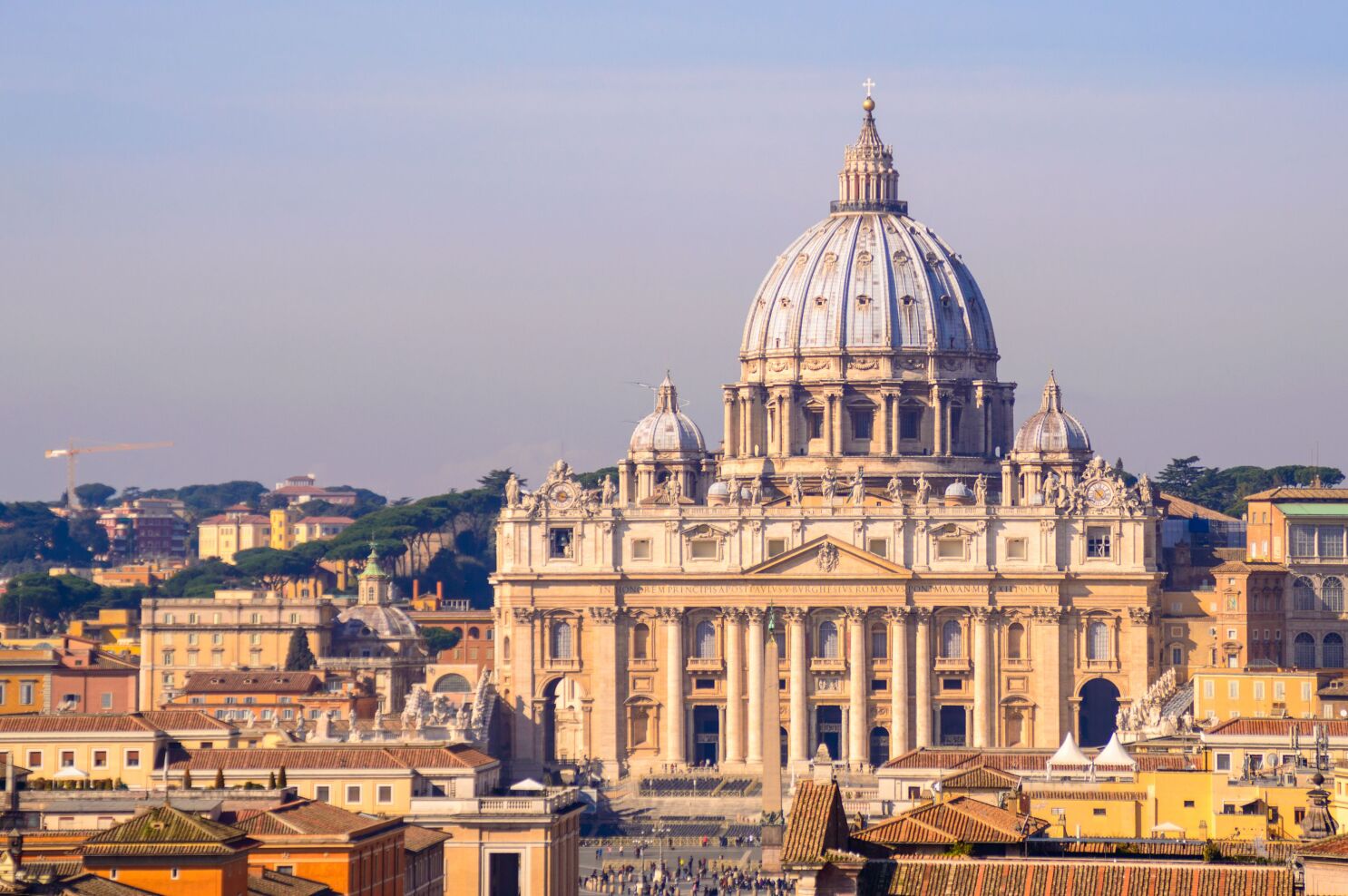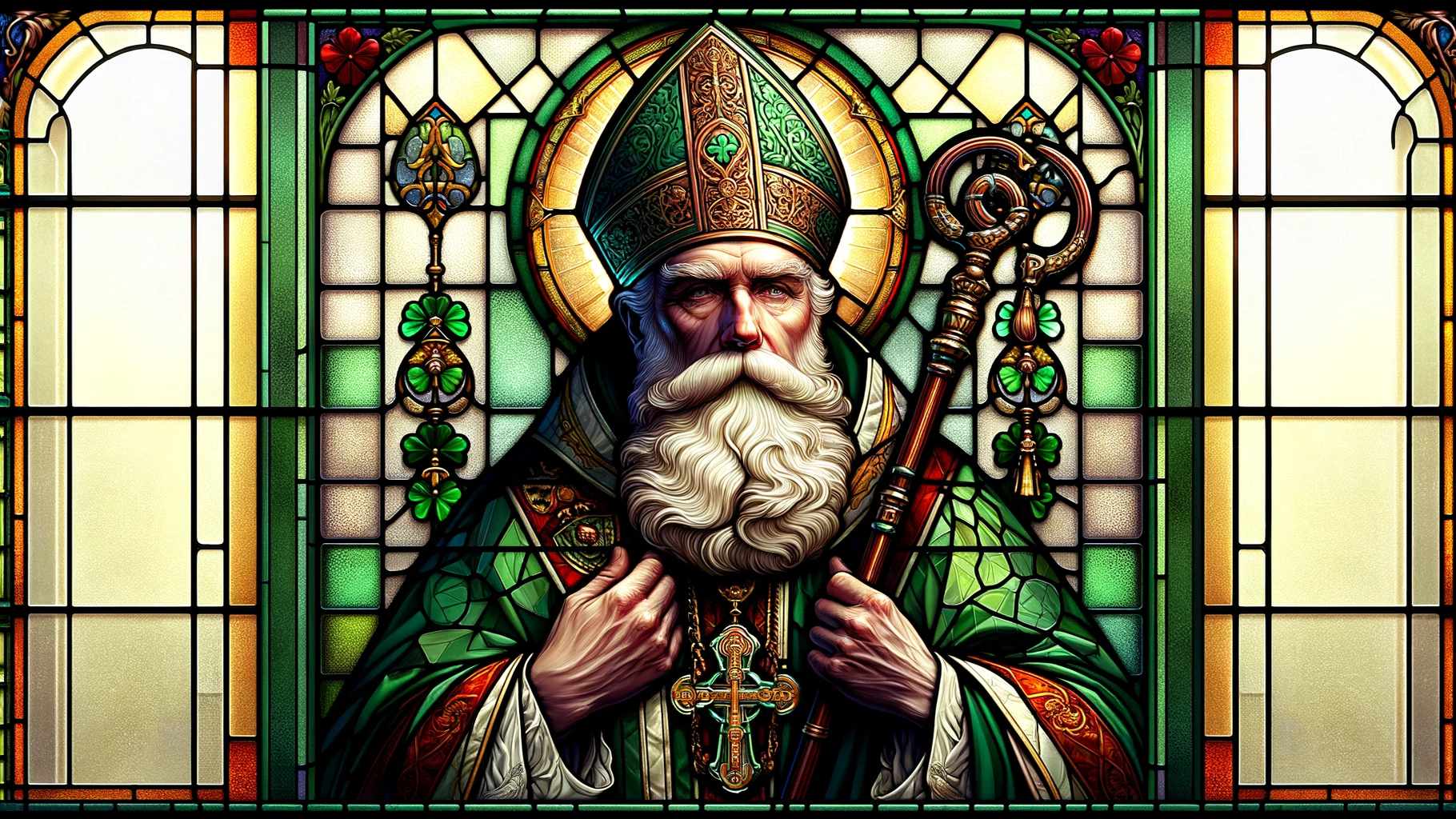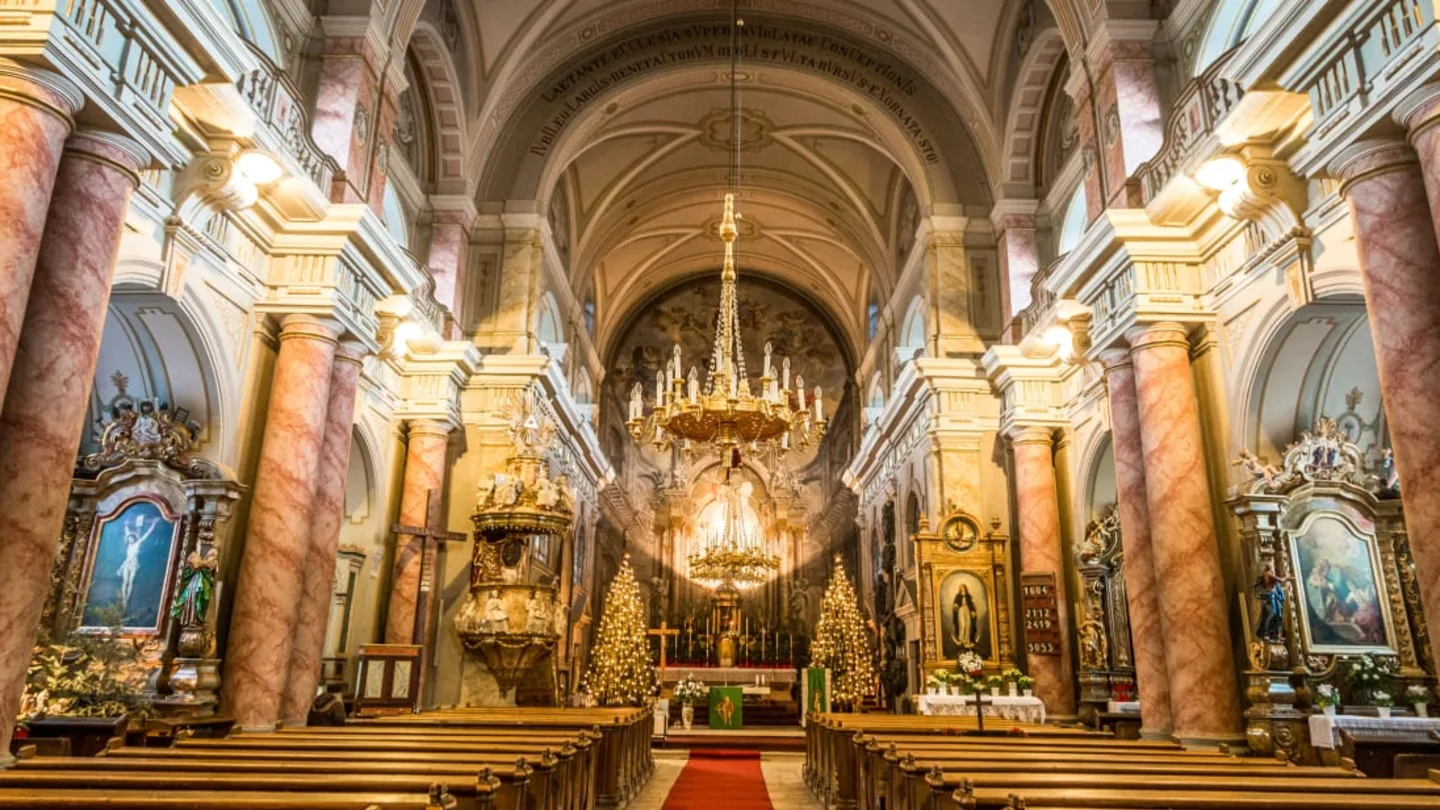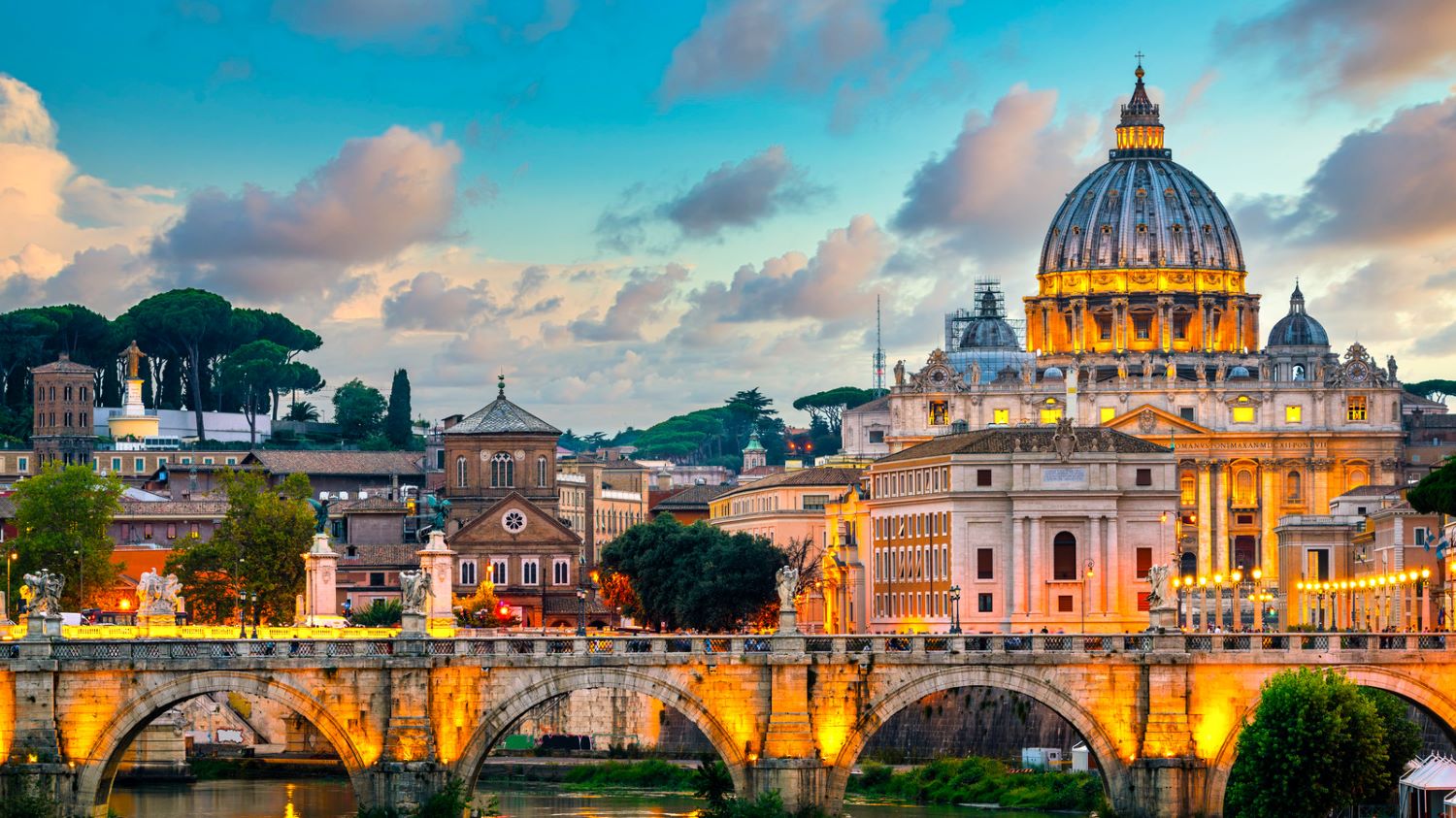Home>Arts and Culture>What Is Saint Mark’s Basilica
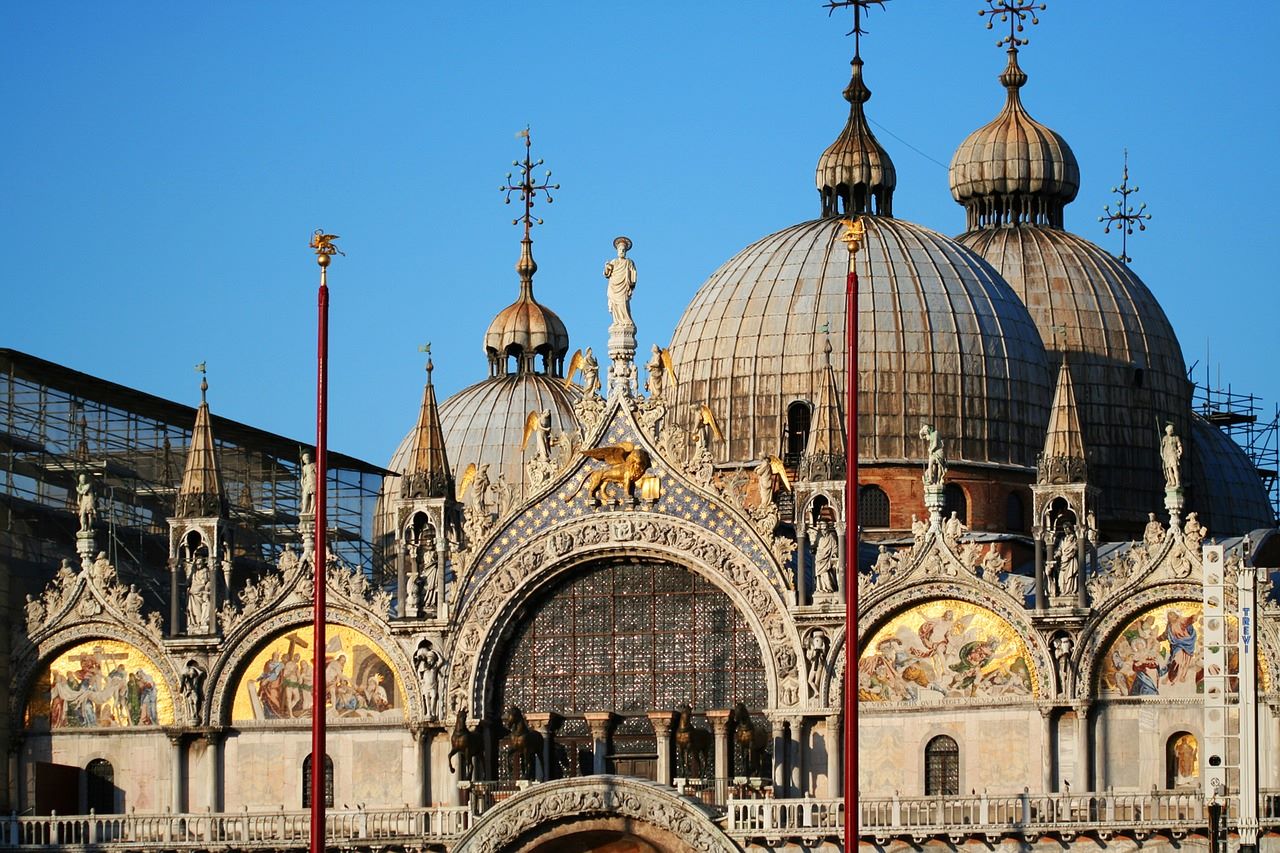

Arts and Culture
What Is Saint Mark’s Basilica
Published: February 10, 2024
Peter Smith, Editorial Director at Christian.net, combines deep insights into faith, politics, and culture to lead content creation that resonates widely. Awarded for his contributions to religious discourse, he previously headed a major organization for religious communicators, enhancing dialogue on faith's societal impacts.
Discover the history and beauty of Saint Mark's Basilica, a masterpiece of arts and culture in Venice. Learn about its stunning architecture and rich artistic treasures.
(Many of the links in this article redirect to a specific reviewed product. Your purchase of these products through affiliate links helps to generate commission for Christian.net, at no extra cost. Learn more)
Table of Contents
Introduction
Saint Mark's Basilica, located in the enchanting city of Venice, Italy, is a breathtaking architectural masterpiece that stands as a testament to the rich history and cultural heritage of the region. This iconic basilica, with its magnificent domes and intricate mosaics, has captivated the hearts and minds of visitors for centuries, drawing them into a world of unparalleled beauty and spiritual significance.
As one of the most recognizable symbols of Venice, Saint Mark's Basilica holds a revered place in the hearts of locals and tourists alike. Its grandeur and historical significance make it a must-see destination for anyone seeking to immerse themselves in the art, culture, and spirituality of this remarkable city.
The basilica's rich history, awe-inspiring architecture, and exquisite art and decoration all contribute to its status as a cultural treasure of immeasurable value. Whether one is drawn to its religious significance, its artistic splendor, or simply the desire to witness a marvel of human creativity, Saint Mark's Basilica offers an experience that transcends time and leaves an indelible impression on all who have the privilege of setting foot within its hallowed walls.
Read more: When Was St. Mark’s Basilica Built
History of Saint Mark's Basilica
The history of Saint Mark's Basilica is a captivating tale that intertwines the realms of religion, politics, and art, spanning over a millennium. The origins of the basilica can be traced back to the 9th century when Venetian merchants smuggled the relics of Saint Mark the Evangelist from Alexandria, Egypt, to Venice. This daring act laid the foundation for the construction of a grand church to house the sacred remains.
The initial structure, completed in 832 AD, was modest compared to the resplendent basilica that stands today. However, as Venice flourished as a maritime power, the need for a more magnificent and fitting place of worship became apparent. The basilica underwent several reconstructions and expansions over the centuries, each iteration reflecting the evolving architectural styles and the wealth of the Venetian Republic.
The architectural evolution of Saint Mark's Basilica mirrors the city's shifting fortunes, from its humble beginnings to its zenith as a dominant force in trade and commerce. The fusion of Byzantine, Romanesque, and Gothic elements in the basilica's design is a testament to the diverse influences that shaped Venice's cultural identity.
Throughout its history, the basilica has weathered numerous challenges, including fires, looting, and structural instabilities. Each time, however, it emerged more resilient and adorned with new embellishments, reinforcing its status as a symbol of Venetian resilience and spiritual devotion.
Today, Saint Mark's Basilica stands as a living chronicle of Venice's past, a monument to the city's enduring spirit and the enduring legacy of Saint Mark. Its history is a tapestry woven with threads of faith, artistry, and the indomitable human spirit, inviting visitors to step into a world where the past and the present converge in a celebration of cultural heritage and architectural splendor.
Architecture and Design
The architecture and design of Saint Mark's Basilica are a harmonious blend of Byzantine, Romanesque, and Gothic influences, reflecting the historical and cultural tapestry of Venice. The basilica's exterior is adorned with a stunning array of domes, arches, and intricate marble facades, creating a visual spectacle that beckons visitors to marvel at its grandeur.
The most striking feature of the basilica is its five domes, each crowned with gilded bronze statues that glimmer in the Venetian sunlight. These domes, with their Byzantine-inspired design, symbolize the celestial realm and serve as a testament to the spiritual aspirations of the faithful. The interplay of light and shadow on the domes creates a mesmerizing effect, evoking a sense of transcendence and awe.
Upon entering the basilica, visitors are greeted by a breathtaking interior adorned with marble columns, intricate mosaics, and opulent decorations. The fusion of Byzantine and Gothic architectural elements is evident in the soaring arches, ornate capitals, and the delicate tracery of the windows, creating a space that exudes both grandeur and intimacy.
The Pala d'Oro, a magnificent altarpiece crafted from gold and adorned with a profusion of precious gems, is a testament to the basilica's opulence and the skill of the craftsmen who contributed to its splendor. The shimmering mosaics that adorn the walls and ceilings depict biblical narratives, saints, and celestial beings, transporting visitors into a world of divine beauty and spiritual contemplation.
The basilica's design is a testament to the ingenuity and artistic prowess of the craftsmen and architects who labored to bring this vision to life. Every detail, from the intricate marble inlays to the delicate mosaics, reflects a dedication to creating a space that transcends the earthly realm and offers a glimpse of the divine.
Saint Mark's Basilica stands as a testament to the enduring power of architectural innovation and the timeless allure of artistic expression. Its design invites visitors to embark on a journey through time and space, where the boundaries between the sacred and the secular blur, and the beauty of human creativity converges with the divine.
Art and Decoration
The art and decoration within Saint Mark's Basilica are a testament to the unparalleled craftsmanship and artistic vision that have defined this revered sanctuary for centuries. As visitors step into the hallowed halls of the basilica, they are enveloped in a symphony of visual splendor, where every surface is adorned with exquisite mosaics, shimmering gold leaf, and masterfully crafted sculptures.
The focal point of the basilica's interior is the Pala d'Oro, an awe-inspiring altarpiece that exemplifies the opulence and artistry of the Byzantine era. This masterpiece, crafted from gold and adorned with a profusion of precious gems, is a dazzling display of the skill and dedication of the artisans who contributed to the basilica's grandeur. The Pala d'Oro serves as a radiant focal point, drawing the gaze of visitors and immersing them in a world of divine beauty and spiritual reverence.
The basilica's walls and ceilings are adorned with a breathtaking array of mosaics that depict biblical narratives, celestial beings, and the lives of saints. These intricate mosaics, crafted from thousands of pieces of colored glass and gold leaf, create a mesmerizing tapestry that invites contemplation and wonder. Each mosaic tells a story, capturing moments of faith, devotion, and the triumph of the human spirit, while also serving as a testament to the enduring power of artistic expression.
The marble floors of the basilica are adorned with intricate geometric patterns and designs, showcasing the skill and artistry of the craftsmen who meticulously laid each tile. The interplay of light and shadow on the marble surfaces creates a sense of movement and dynamism, adding to the immersive experience of the basilica's interior.
Sculptures and reliefs adorn the columns and arches, each bearing the mark of master craftsmen who imbued these works with a sense of life and emotion. From the delicate tracery of the capitals to the expressive forms of the sculptures, every detail reflects a dedication to capturing the essence of faith and the human experience.
The art and decoration within Saint Mark's Basilica transcend mere ornamentation; they are a testament to the enduring power of artistic expression and the profound impact of visual storytelling. As visitors gaze upon these masterpieces, they are transported into a world where the divine and the human converge, where the beauty of art becomes a conduit for spiritual contemplation and a celebration of the human spirit.
Religious Significance
The religious significance of Saint Mark's Basilica transcends its role as a mere architectural marvel; it stands as a living testament to the spiritual devotion and faith that have permeated the hearts of countless worshippers for centuries. As the final resting place of Saint Mark the Evangelist, the basilica holds profound significance for the Christian faithful, serving as a revered pilgrimage site and a beacon of spiritual enlightenment.
The relics of Saint Mark, enshrined within the basilica, have drawn pilgrims from far and wide, seeking solace, healing, and a deeper connection to their faith. The presence of these sacred remains imbues the basilica with an aura of sanctity, inviting worshippers to partake in a profound communion with the divine and to seek the intercession of the saint in their prayers and supplications.
The basilica's sacred relics and the veneration of Saint Mark have fostered a sense of spiritual unity and reverence among believers, transcending cultural and geographical boundaries. For centuries, the basilica has served as a place of pilgrimage, where the faithful gather to pay homage to the saint and to seek his guidance and blessings in their lives.
The religious significance of Saint Mark's Basilica extends beyond its association with Saint Mark; it is a testament to the enduring power of faith and the transformative impact of spiritual devotion. The basilica's sacred art and architecture, infused with symbolism and religious iconography, serve as a visual expression of the Christian faith, inviting worshippers to contemplate the mysteries of divine grace and salvation.
Visitors to the basilica are enveloped in an atmosphere of reverence and contemplation, where the ethereal beauty of the mosaics, the flickering candlelight, and the solemn rituals create a sacred space for spiritual reflection and renewal. Whether one is a devout believer or a seeker of spiritual truth, the basilica offers a sanctuary where the soul can find solace and inspiration.
Saint Mark's Basilica stands as a testament to the enduring power of religious devotion and the timeless allure of spiritual enlightenment. Its significance transcends the boundaries of time and space, inviting all who enter its hallowed halls to embark on a journey of faith, discovery, and transcendence.
Read more: How Long To See St. Mark’s Basilica
Visitors and Tourism
Visiting Saint Mark's Basilica is a transformative experience that beckons travelers from across the globe to immerse themselves in the rich tapestry of art, history, and spirituality that defines this iconic landmark. As one of the most visited sites in Venice, the basilica attracts millions of tourists each year, drawn by its architectural splendor, religious significance, and the allure of its storied past.
Upon entering the basilica, visitors are greeted by a breathtaking panorama of opulent mosaics, gilded domes, and a palpable sense of reverence. The sheer grandeur of the interior, adorned with shimmering gold leaf and intricate marble, evokes a sense of awe and wonder, inviting visitors to embark on a journey through centuries of artistic and religious heritage.
Guided tours offer visitors the opportunity to delve into the basilica's history, unraveling the tales of Saint Mark's relics, the architectural evolution of the structure, and the symbolism woven into its design. Knowledgeable guides illuminate the significance of the basilica's art and decoration, providing insights into the biblical narratives and saints depicted in the mosaics, as well as the craftsmanship behind the Pala d'Oro and other precious adornments.
The basilica's role as a pilgrimage site adds a layer of spiritual resonance to the visitor experience. Pilgrims and worshippers flock to the basilica, seeking solace, inspiration, and a deeper connection to their faith. The opportunity to witness religious rituals and ceremonies within the hallowed halls of the basilica offers visitors a profound glimpse into the enduring traditions and spiritual devotion that continue to thrive within its sacred confines.
Beyond its religious significance, Saint Mark's Basilica is a testament to the enduring allure of Venetian art and culture. Its status as a UNESCO World Heritage Site underscores its universal value, drawing art enthusiasts, historians, and curious travelers who seek to unravel the mysteries and marvels enshrined within its walls.
The basilica's location in the heart of Venice's historic center makes it a focal point for tourists exploring the city's labyrinthine streets and picturesque canals. Its proximity to other renowned landmarks, such as the Doge's Palace and the Grand Canal, further enhances its appeal as an integral part of the Venetian cultural tapestry.
For visitors, Saint Mark's Basilica offers a profound and multifaceted experience—a convergence of art, history, spirituality, and the timeless allure of Venetian heritage. It stands as a testament to the enduring power of human creativity and the transcendent beauty that continues to captivate and inspire all who have the privilege of crossing its threshold.
Conclusion
In conclusion, Saint Mark's Basilica stands as a timeless testament to the enduring legacy of Venice, encapsulating the city's rich history, cultural heritage, and spiritual devotion within its resplendent walls. From its humble origins as a repository for the relics of Saint Mark to its evolution into a grand architectural masterpiece, the basilica has borne witness to the ebb and flow of Venetian fortunes, emerging as a symbol of resilience, creativity, and unwavering faith.
The basilica's architectural and artistic splendor, a harmonious fusion of Byzantine, Romanesque, and Gothic influences, invites visitors to embark on a journey through time and space, where the boundaries between the earthly and the divine blur. The opulent mosaics, shimmering gold leaf, and masterfully crafted sculptures create an immersive tapestry of visual splendor, offering a glimpse into the transcendent beauty of human creativity and spiritual expression.
Moreover, the religious significance of Saint Mark's Basilica, as the final resting place of Saint Mark and a revered pilgrimage site, fosters a sense of spiritual unity and reverence among believers. The basilica's sacred relics and the veneration of the saint have drawn pilgrims from far and wide, inviting them to partake in a profound communion with the divine and seek solace and inspiration within its hallowed halls.
As a magnet for tourists and art enthusiasts, the basilica serves as a gateway to the timeless allure of Venetian art, culture, and history. Its status as a UNESCO World Heritage Site underscores its universal value, drawing visitors from across the globe to witness the marvels enshrined within its walls and to immerse themselves in the grandeur of its storied past.
In essence, Saint Mark's Basilica transcends its role as a mere architectural marvel; it is a living testament to the enduring power of human creativity, the transformative impact of spiritual devotion, and the timeless allure of Venetian heritage. It stands as a beacon of inspiration, inviting all who enter its sacred confines to embark on a journey of discovery, contemplation, and transcendence.
